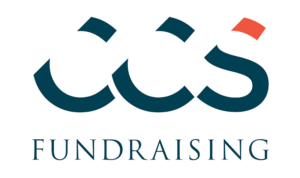Year-end giving presents organizations with a unique opportunity to hit fundraising goals in the last days of the year, as an estimated one-third of annual giving occurs in December, with 10% given over the last three days. People tend to be more generous around holiday times, and for Americans, this month is the last chance to make tax-deductible gifts for the fiscal year.
Does your nonprofit organization have a solid strategy to capitalize on these noteworthy trends?
Here are five steps to maximize the success of your year-end fundraising appeal.
1. Create an activity timeline and benchmarks.
A well-planned end-of-year timeline focuses on follow-up activities throughout December. As fundraisers, we thrive on goals—use this to your advantage and set metrics to follow. Start with your target in mind and work backward to determine what actions are required to get you there, including the number of face-to-face gift requests, touchpoints, and formal gift requests needed.
2. Develop a unique case for support.
Your case for support tells who you are as an organization, why you need support, and how that support will make an impact.
Your case statement should include the following information.
- Past. Where have you been, and how has it shaped your organization?
- Present. Where are you now? What is your mission? Show your impact through testimonials, statistics, and pictures.
- Future. Where are you going? What is your vision? How can donors make that vision a reality? Focus on the return on their investment.
As you craft your case for support, be mindful that the end of the year is busy. Your case for support should be clear and make it easy for potential donors to quickly discover who you are, your mission, and your vision for what their contribution will accomplish.
3. Analyse and segment your donor base.
Segmenting and prioritizing your prospects through identification, research, and rating make it possible to customize your ask to the donor.
- Identify major gift prospects that you can personally contact.
- Then, identify donors from prior years who have not contributed during the current year.
- Next, research the prospects you have identified to determine the right amount to request and how they like to give by looking at prior year response methods.
- Finally, determine the best outreach strategy and prioritize your prospects. Decide who should get a personal phone call, a custom message, or a mass communication.
For the best prospect identification, utilize data analytics services to uncover donors with the most giving potential.
4. Know your engagement strategy.
Once you have segmented your donors as best you can, use a combination of different outreach methods and tailor your approach based on prospect priority. Regardless of your chosen delivery method, request a specific gift that aligns with your appeal goals.
5. Follow up!
The biggest mistake that organizations make is that they fail to follow up. Rather than sending your appeal materials and simply hoping for the best, use a multi-step, multi-channel approach to follow up and secure decisions.
Communication Is Key for a Successful Year-End Campaign
In the final week of the year, send multiple reminder emails, including one on 31 December. Communicate individually with your best prospects via phone calls, personal emails, social media messages, and text messages. Deadlines are a fundraiser’s best friend – use the year-end deadline to generate excitement, momentum, and results. Then communicate your success and start planning for next year!
More Insights
5 Essential Strategies for #GivingTuesday Follow-Up
Following up with donors after #GivingTuesday is essential. So where should you start? These five simple but powerful principles can help.
Boost Year-End Giving with CARES Act Tax Incentives
In this article, we discuss how the tax incentives that are set to expire at the end of 2021 could encourage charitable donations. Read more about the steps you can take now to make sure your organization benefits by proactively engaging those who are most likely to donate.
